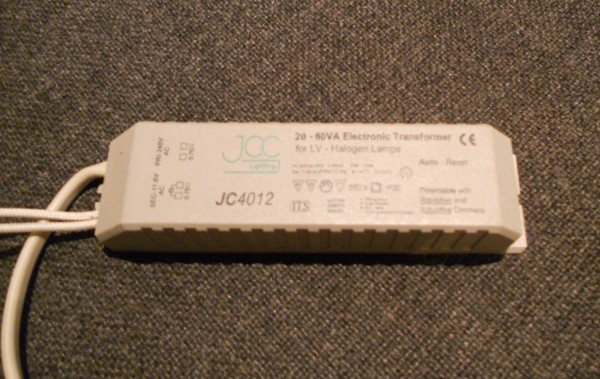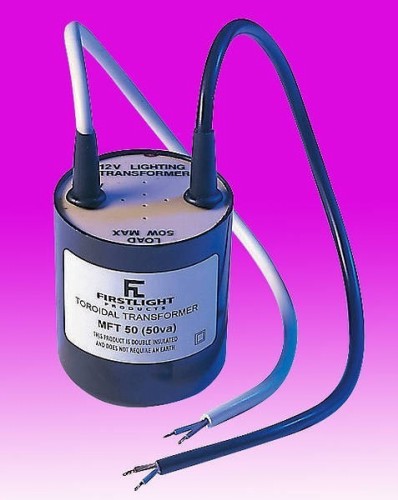Disclaimer: if you decide to copy any of the things I did here, you do so entirely at your own risk. If you are not completely confident you know what you are doing consult a qualified electrician.
It seems to have become fashionable these days to use multiple down-lighter spots in the ceiling, rather than pendant style lighting. It seemed like a good idea when we discussed it all with the architect, but aside from the fact that they turned out not to be a particularly 'green' lighting solution, they can also generate noise in the LF bands!
The culprit is a switch-mode unit that converts 230V AC mains to 12V, like this one:

They have become ubiquitous because it costs a lot less to manufacture one of these compared with a transformer, but there is little or no filtering to stop switcher noise using the lighting circuit as a big HF antenna. Fortunately, you can still find a proper transformer to replace them, like this one from TLC-Direct.

Typically, a single down-light supply needs to be rated at 50VA because it's possible to buy 50W 12V lamps, but usually 35W lamps will be fitted - which I think give about the same luminance as a 50W 230V lamp.
The toroid is a special type with a diameter small enough for the unit to pass through the hole in the ceiling. It won't fit through the bezel, so you'll have to remove that first. Make sure you disable power to the lighting circuit at the fuse box before you start. The bezel is held in place with sprung clips the other side of the plasterboard. You will probably find a kind of insulating hat which is held in shape with a metal frame, just inside the ceiling void. This is an 'intumescent' cover, whose purpose is to prevent fire penetrating the ceiling void. This is necessary if the plasterboard ceiling was supposed to be fire rated to pass building regulations, because making a hole in it reduces its performance. If it exists you ought really to keep it, or replace it if necessary.
Once the bezel has been removed you should be able to pull the bayonet fitting, switch-mode supply and circular junction box out of the hole. Disconnect the latter two from the junction box, and connect the transformer to it instead (230V side). The 12V output from the transformer can be connected to the original porcelain connector block that goes to the bulb fitting.
It's an expensive process to replace a lot of them, as I had to! Better to specify them at the outset.
An alternative approach is to replace change the bulbs to 230V types. I have tried this, but this is less desirable because:
- Strictly speaking you need to replace the bezel as well as the
bulb bayonet fitting because they are slightly different
- The light is not as bright for the wattage
- The bulbs tend to fail quicker
- The depth of the bayonet fitting is longer, and so may foul if the ceiling cavity isn't deep enough


